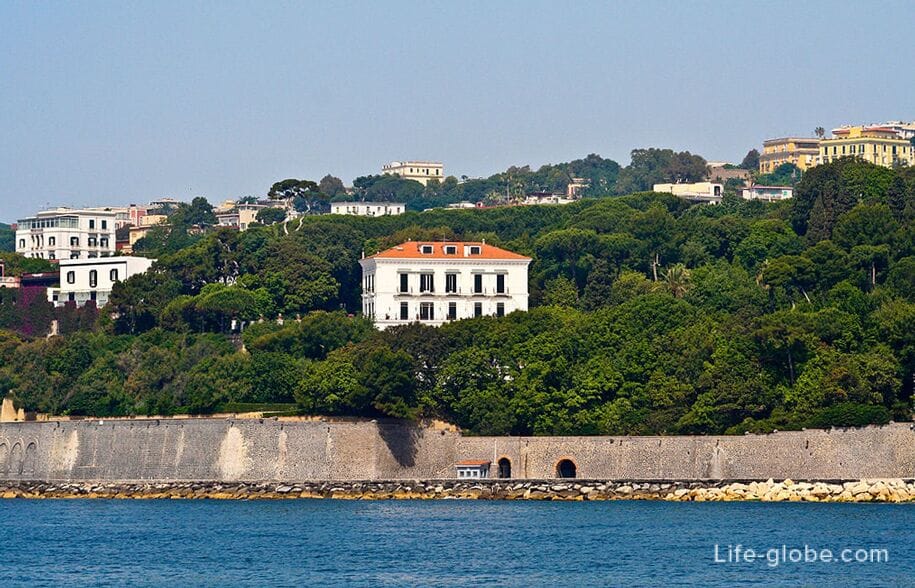
Naples is well known for its historical buildings, including castles, palaces, villas, cathedrals, churches, cathedrals and monasteries.
Monumental that cause a special interest among visitors to the city and represents some characters of the city are the castles of Naples.
In the Naples there are five castles, three of which are in the Tops of the sights of the city and, undoubtedly, deserve special attention.
Castel Dell'ovo or "Egg castle" / "the egg Castle" (Castel Dell'ovo) is the oldest fortification built on a tiny island Megaride where the city was founded by colonists semeiskie.
The current appearance of the castle dates back to the Aragonese domination (15th century). During the Italian war, the castle suffered greatly from the French and Spanish troops. After a long period dilapidated, the castle acquired its present form during an extensive renovation, which began in 1975.
Currently, the castle is in the historic centre of the city near the waters of the Tyrrhenian sea and is a monumental complex of Castel Dell'ovo. Entrance to the castle is free. During the year, in the halls of the castle hold various exhibitions, events to visit, and it is possible for a fee.

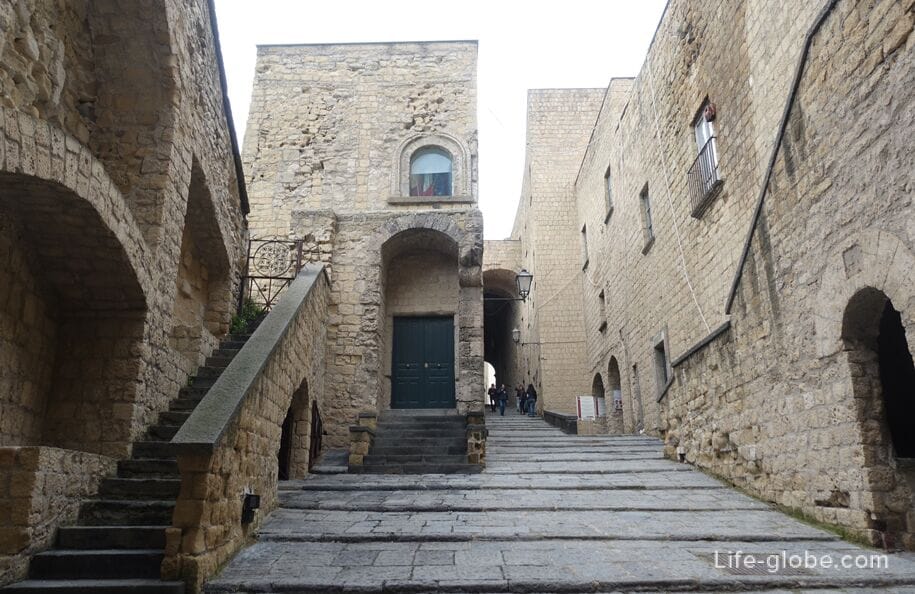
In the castle there are several terraces at different levels and a balcony with scenic views of the waterfront, the Bay of Naples and some of the surrounding area. Read more about Castel del Ovo...


Castel Nuovo also known as Maschio Angioino castle (Castel Nuovo) translated literally means "New castle", an ancient local name for the Maschio Angioino (Maschio Angioino) - historical medieval and Renaissance castle.
The construction of the ancient core, today partially revived after the restoration and archaeological research was initiated Anguissola Charles I, who in 1266 defeated the Swabians came to the throne of Sicily and founded the transition of the capital from Palermo to Naples city.
During the reign of Robert of Anjou the castle became the center of cultural life, where the assembled artists, doctors and writers. The main changes the castle has undergone in the times of the Aragonese, and then French rule. At that time the castle has survived the transition from the medieval Palace to the fortress, which was associated with the new needs of wartime. The structure of the building became more massive and was very similar to the modern castle, which is the result of the restoration.
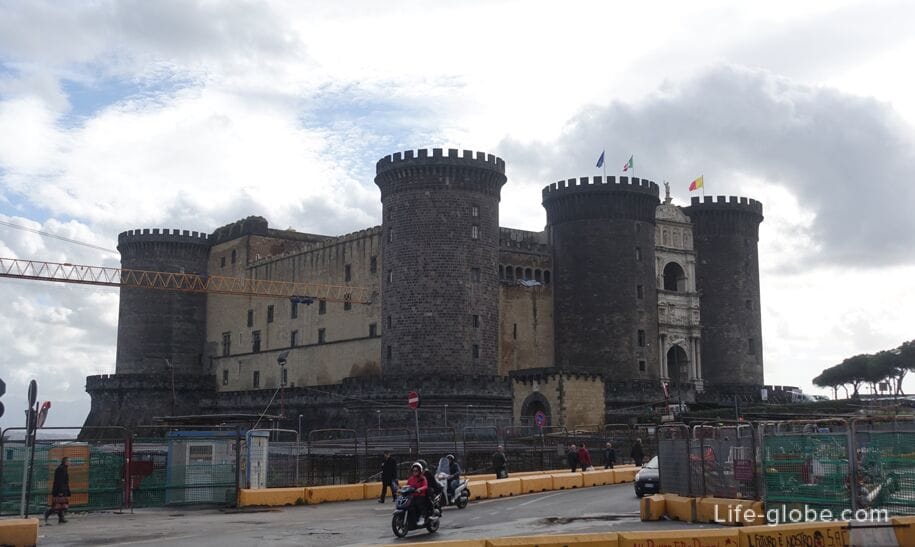
At present the castle exhibitions and cultural events and also houses the Civic Museum, which includes the Palatine chapel and Museum paths on the first and second floors. The entrance ticket costs 6 Euros.
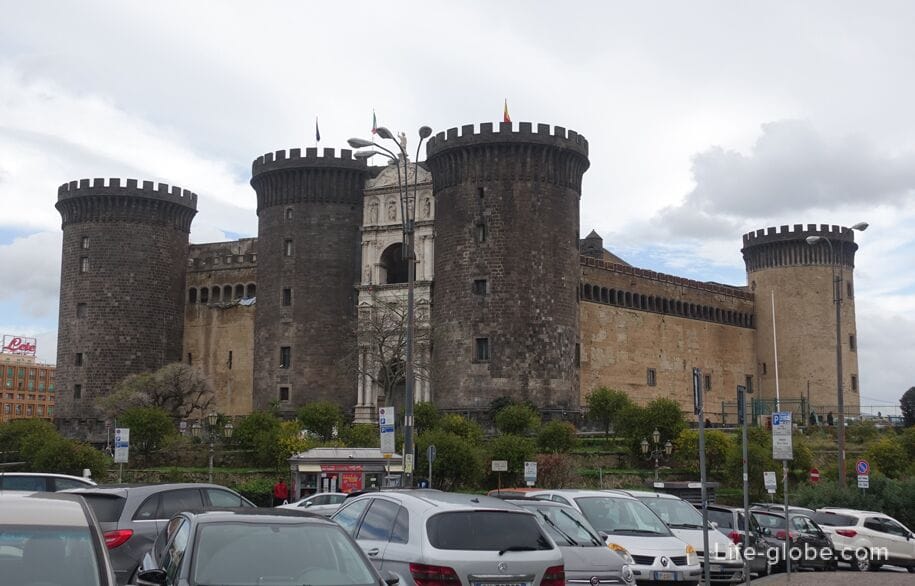
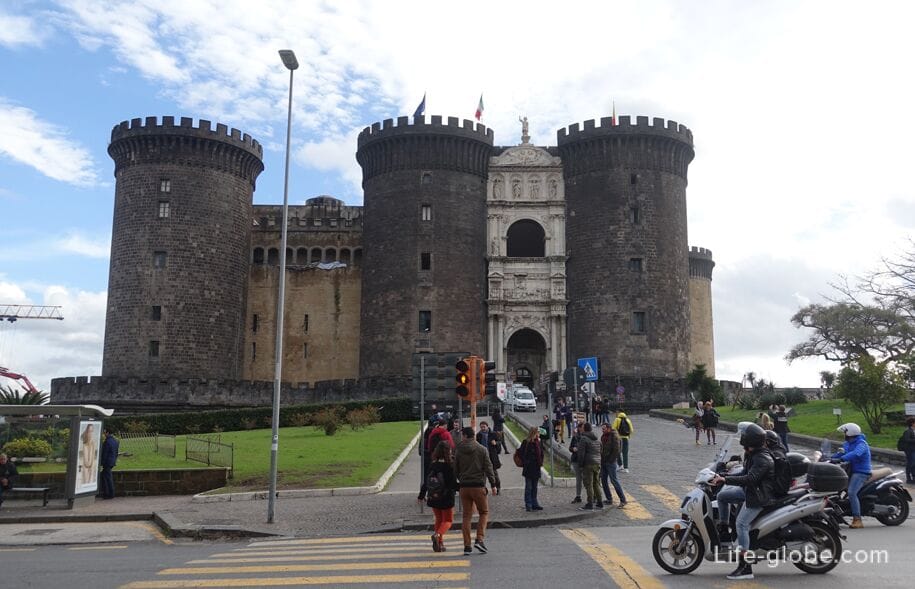


Castle Sant'elmo (Castel Sant'elmo) is a medieval fortress located on the Vomero hill and erected in 1329, in the form of a hexagonal star.
Currently the fortress is a historical monument - the monumental complex of Castel Sant'elmo open to the public and all interested persons. It serves as a Museum, exhibition hall and offices. Some of the indoor areas redesigned for a conference and auditoriums. On site or in the castle are different exhibitions and cultural events.
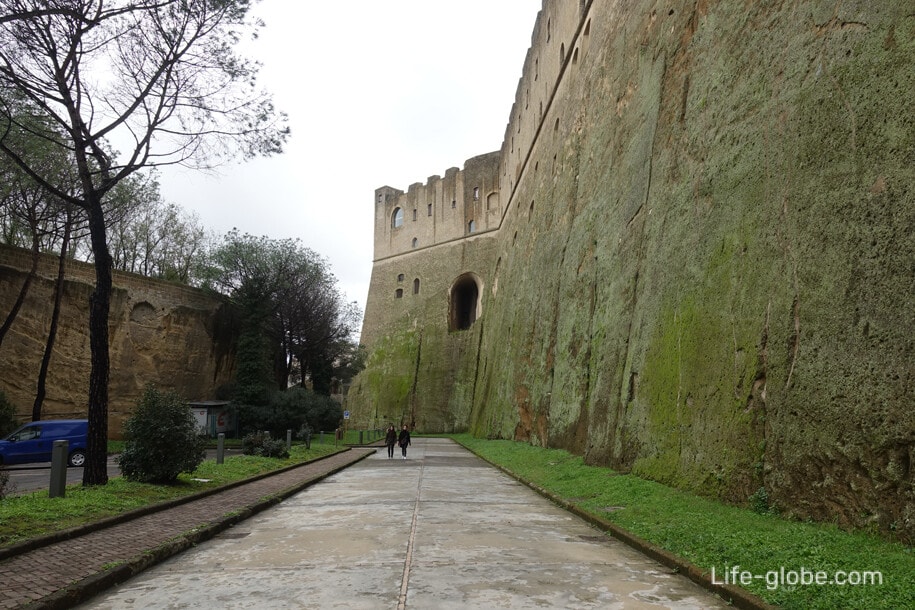
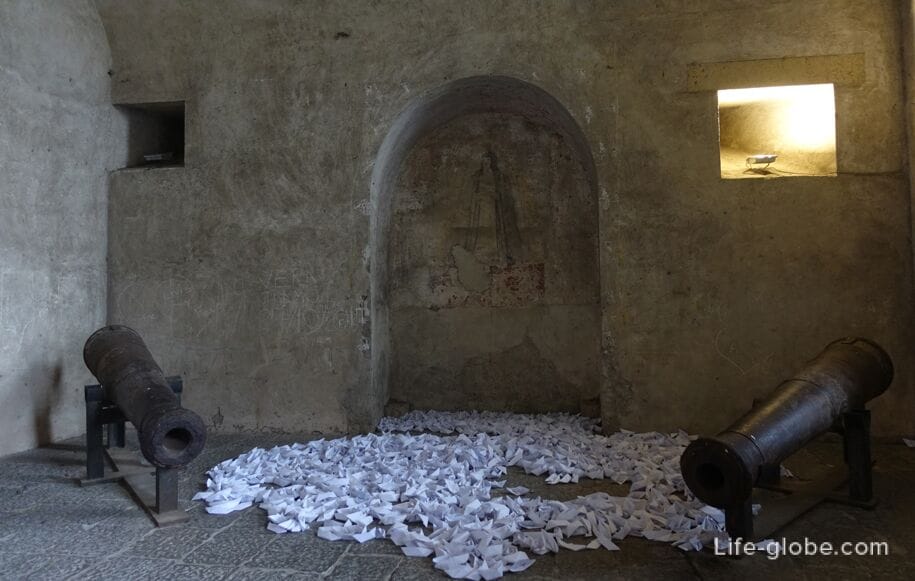
Special attention deserves the top platform of the castle - Piazza d Armi (Piazza d'armi), facing the former military facilities.
In the main building and the top platform is a Museum of Naples 1910-1980 years (Museo del Novecento).
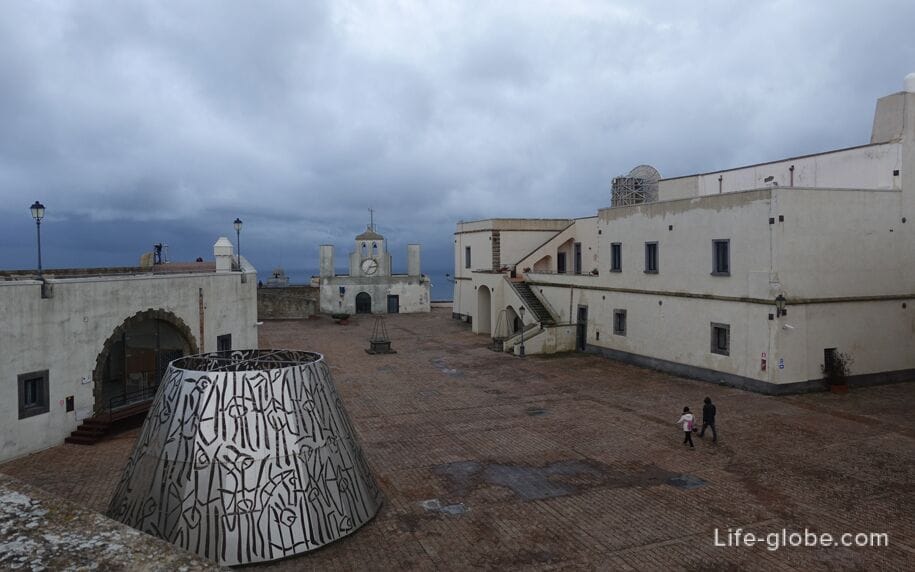
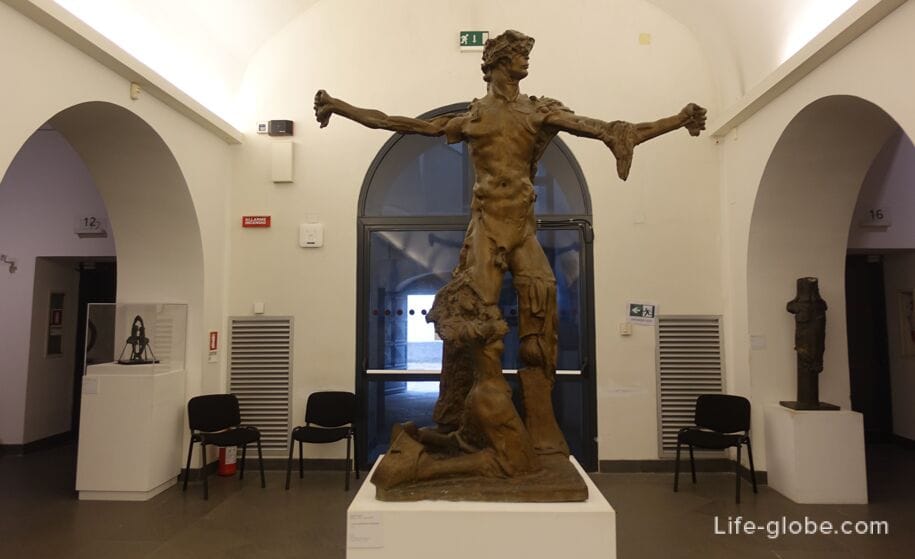
Due to its location, the castle is not only visible from many points in Naples, but also the grounds of the castle offer some of the best panoramic views of Naples, Bay of Naples, Vesuvius and the surrounding area. Read more about the castle Sant'elmo...
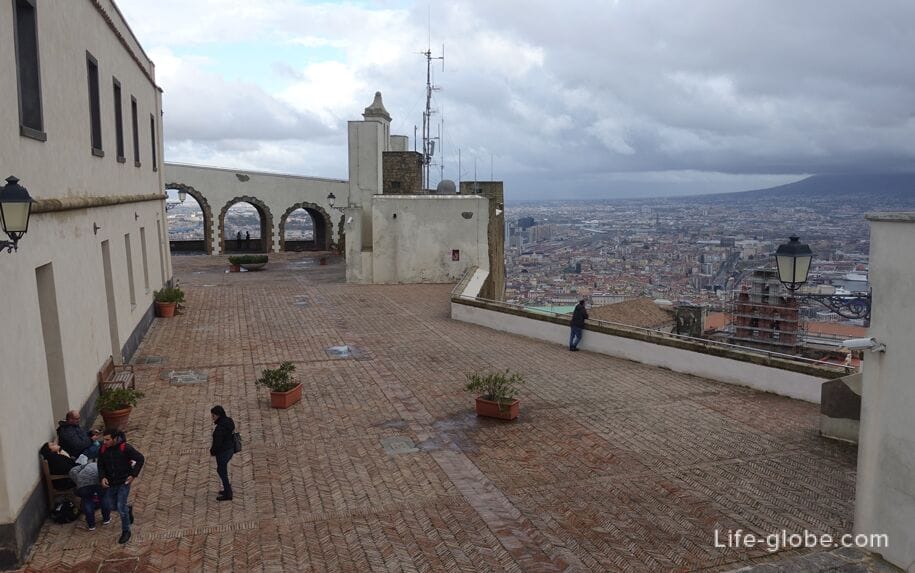

Castel Capuano (Capuano Castel) was built in the mid 12th century, is of Norman origin and was named "Capuano" due to the fact that is close to the old city gate of Porta Capuana (Porta Capuana).
The castle was extended by Frederick II and became one of his Royal palaces. Throughout its history the castle was the residence of many kings and Queens.
In the 16th century the Castel was the Hall of justice. In order to adapt the castle to new features, it was rebuilt in 1537: all the typical military structure was liquidated, the interior space was modified, and the basement converted into a prison with a well-equipped torture chambers.
In 1752, during the period of the Bourbons, was made of frescoes, and in 1857 - ' 58, the entire castle complex has been renovated, losing the traces of the ancient form. This is the last intervention brought the most significant changes: the main facade was renovated, the balcony turned into the window arches of the first floor disappeared.
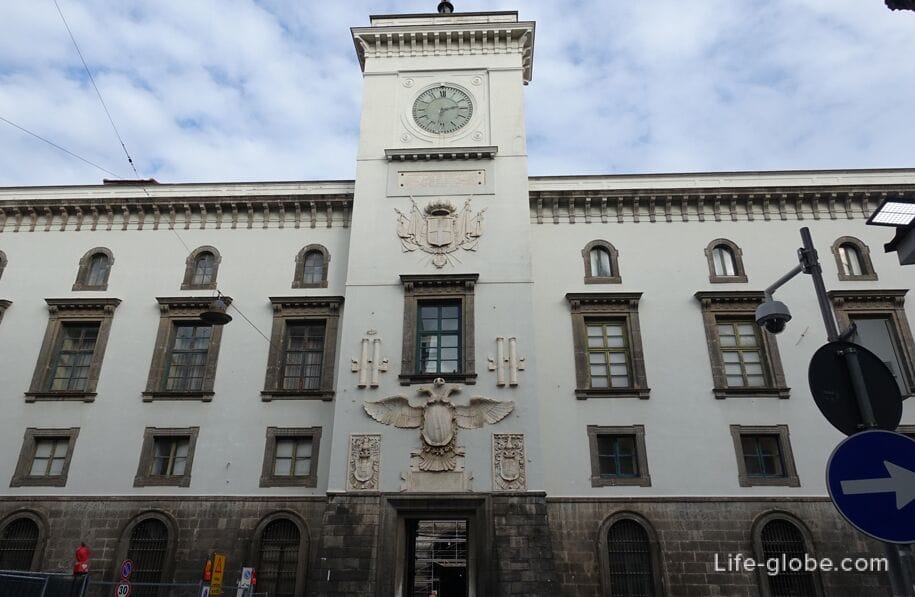
The castle of Carmine (Carmine Castle) - former castle in Naples.
It was one of the fortifications built in 1392, and considerably modernized by the Spaniards under the leadership of the Viceroy Pedro álvarez de Toledo in the mid-16th century as part of plans to surround the city walls and FORTS.
The fortress had great strategic importance in the military history of the city up to the defence of the Neapolitan Republic of 1799 from the returning royalist forces of king Ferdinand IV.
In 1900-ies, to release space for the construction of the modern road along the sea and the port of Naples, the fortress was demolished. Two towers and fragmentary ruins still stand as historical monuments.
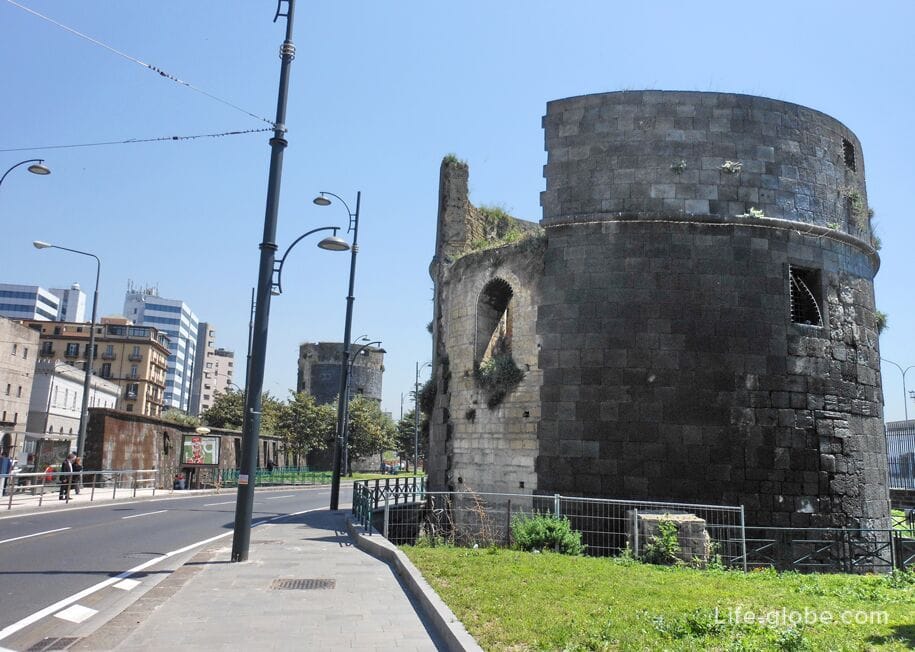
A separate category of historically significant buildings of Naples include the palaces and villas, of which there are many in the city.
Among the most interesting in the historical center of Naples, you can select:
Royal Palace (Palazzo Reale - Palazzo Reale di Napoli), the construction of which began in 1600 and lasted more than 50 years, located in Piazza Plebiscito. Also on the square are: Palazzo Salerno and Palazzo della Prefettura. Read more about Piazza Plebiscito...

Palace of Donna Anna (Palazzo donn'anna) - a historical monument of the 17th century located near the beaches of the hill of Posillipo.

The Palace of Venice (Palazzo Venezia) Palace of the 15th century, one of anyh and unique buildings in the centre of Naples.
Currently the rooms of the Palace used for exhibitions and events. Part of the building can be visited free of charge. Also in the Palace are the courtyard and garden, a souvenir shop and cafe tables which are placed on the wide balcony. Read more about the Palazzo Venezia...
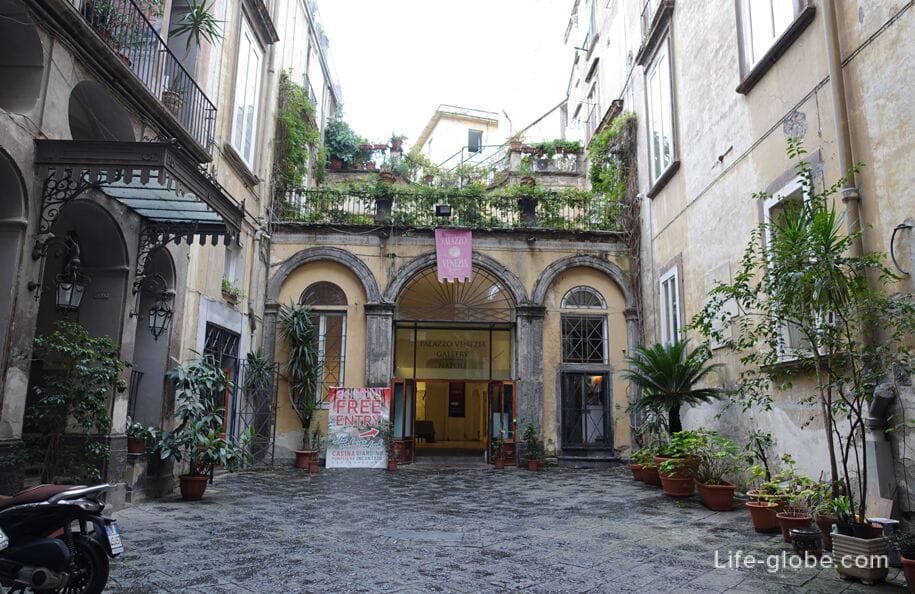
The Palace of Capodimonte Royal Palace of Capodimonte (Capodimonte Royal Palace) - the former summer residence and hunting Lodge of the kings of the two Sicilies, and one of the two Royal palaces in Naples.
"Capodimonte" means "top of the hill," and the Palace was originally just outside the city, which now had expanded encompassing the Palace and the garden.
Today, the walls of the former elegant Palace is the national Museum of Capodimonte and art gallery of the city, and around a large garden. The entrance ticket to the Museum € 12, Park free. Read more about the Park and the Palace of Capodimonte...
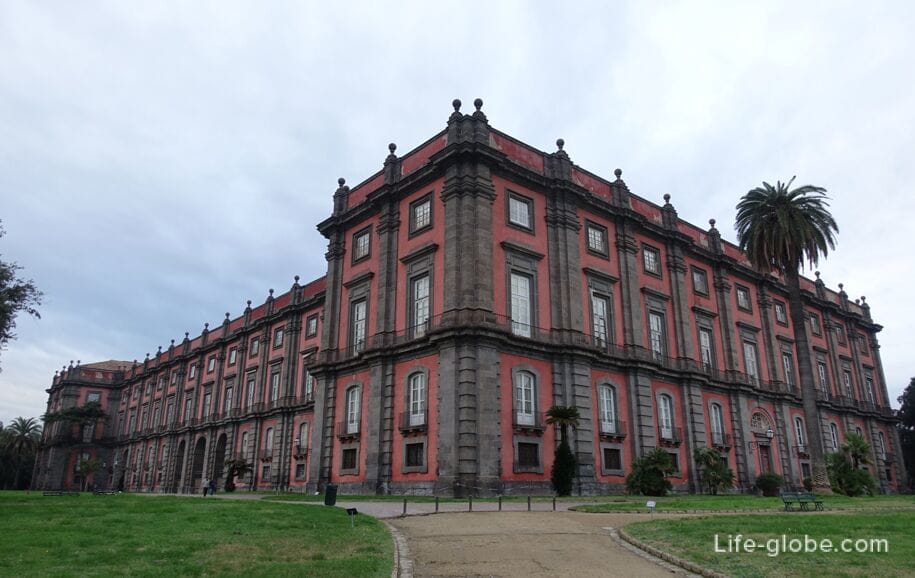
Palazzo del Garda (Palazzo degli Studi) is a Palace in Central Naples, located on the Museumplein.
The construction of the building began in 1586 as cavalry barracks, then located outside the walls of Naples.
In 1612, the Viceroy don Pedro Fernandez de Castro, count of Lemos, decided to move into the unfinished building of the University of Naples ("Palazzo dei Regi Studi"). At the present time within the walls of the Palace houses the national archaeological Museum of Naples. The entrance ticket costs 12 Euros.
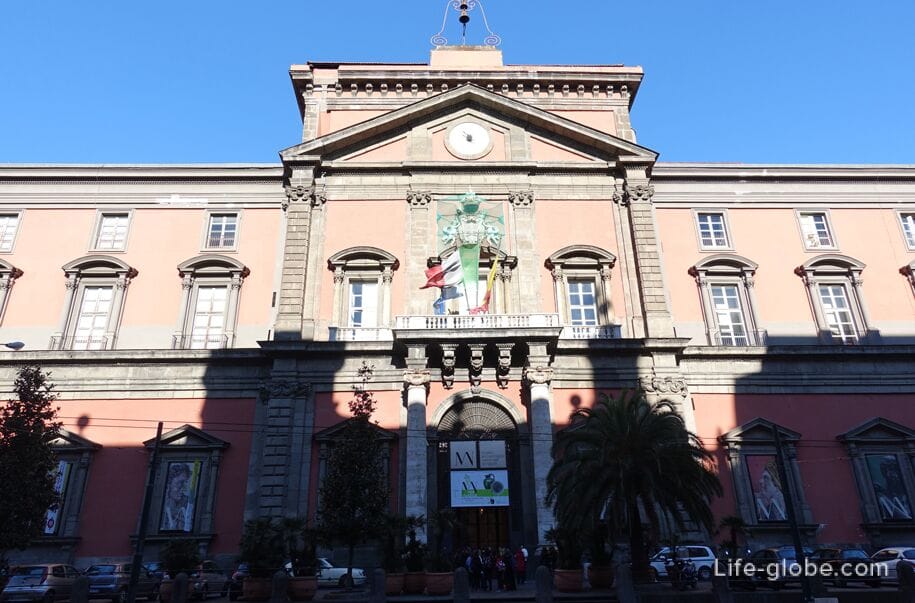
Manawala Palazzo (Palazzo Mannajuolo) is located in Chiaia, and is one of the most successful examples of the architectural style and urban modernity.
The building was built between 1909 and 1911 by the project of Giulio Ulisse Arata in collaboration with engineers Gioacchino Luigi's Melucci and Giuseppe Manawala. With the construction used one of the at that time modern methods of construction - concrete.
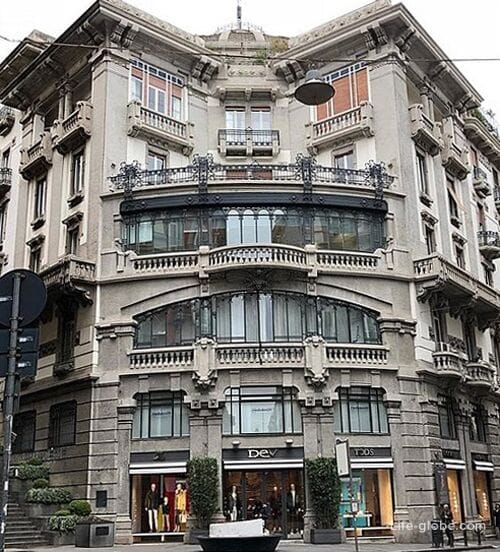
Villa Floridiana (villa Floridiana) - a historic building and a large Park, located on the Vomero hill. The Villa was built between 1817 and 1819, after Ferdinand I of the House of Bourbon, King of the two Sicilies, acquired the property.
The Villa is currently a decorative arts Museum Duca di Martina, Naples.
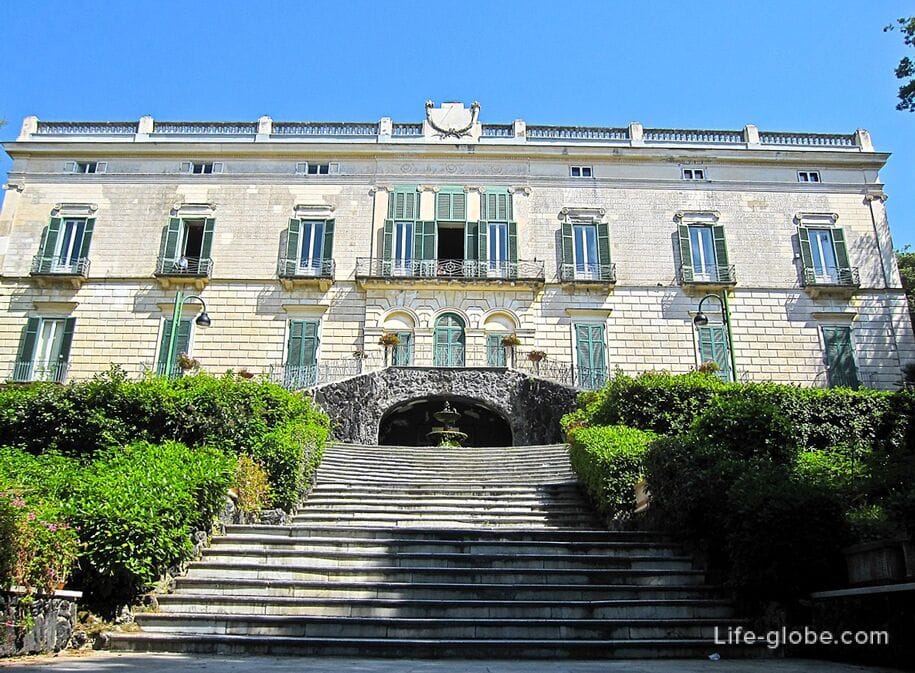
Villa Pignatelli (Villa Pignatelli), was built for Ferdinand Acton in 1826 as a neoclassical residence. Outside the Villa you will find a garden and domestic premises is a Museum (Museo Pignatelli).
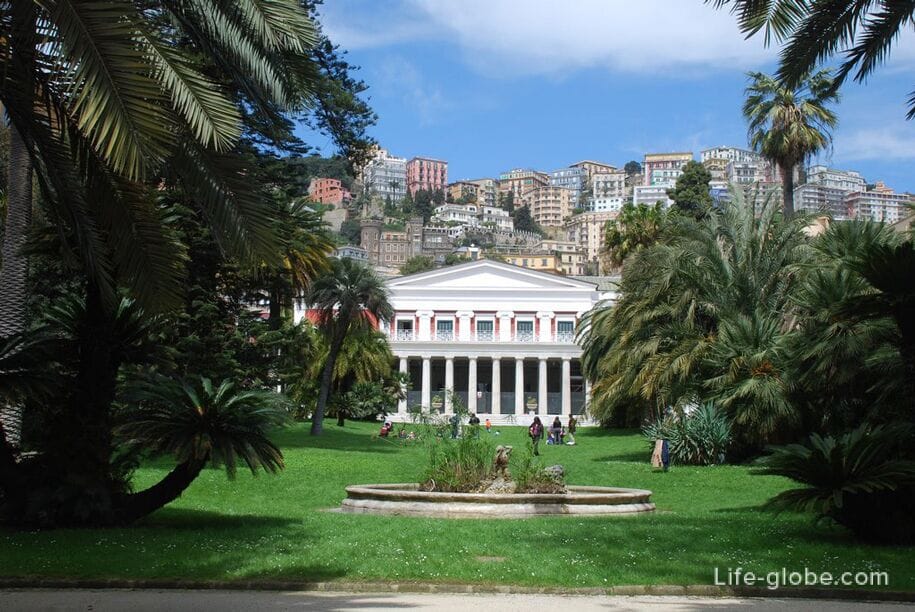
Villa Rosebery (Rosebery Villa) located near the sea on the hill of Posillipo. Villa is one of three official residences of the President of the Italian Republic.
The Villa is called "Rosebery" since they belonged to the British Prime Minister, the 5th Earl Rosebery. The Villa area is 6.6 hectares.
